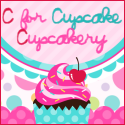So what is Mooncake?
 |
| (Imagine from Google) |
Mooncakes are considered a delicacy; production is labor-intensive and few people make them at home. Hence, most prefer to buy them from Chinese bakery or Chinese restaurant. The price of mooncakes usually ranges from US$10 to US$50 for a box of four. I still remember when I first came here, my mom didn't know that we could buy mooncakes from the Chinese bakery or stores in the States. In the first few years, she shipped us few boxes of mooncakes for the Mid-Autumn Festival each year until we told her we could get it from here (of course, she was all disappointed because she could not think of anything else to send us.).
*Source from Wikipedia.
Traditional Fillings of Mooncakes -
Traditional fillings include: lotus seed paste, red bean paste, jujube paste, five kernel ( A filling consisting of 5 types of nuts and seeds, coarsely chopped, is held together with maltose syrup), Chinese ham, and tea influenced filling (such as green tea filling, oolong tea filling, etc).
 |
| From left, 5 types of nuts and seeds; center, red bean paste, right lotus seed paste with salted yolk (Imagine from Google) Green tea paste mooncakes with salted yolk (Imagine from Slanted) |
Outside the Box Fillings of Mooncakes -
Taro, pineapple and durian (I am not sure about this flavor, even my friend told me they are yummy!). Except for these fruity flavors, Starbucks have also created their own version of moon cake - coffee flavored mooncakes. If you like ice cream, how about Haagen-Dazs ice cream mooncakes?! Don't like ice cream, how about chocolate mooncakes?
 |
| Starbucks coffee flavored mooncake (Imagine from Dobbybrain.com) |
 |
| My friend's durian snowskin mooncakes Flaky taro mooncakes (Imagine from Yochana's Cake Delight) Ice cream mooncakes (Imagine from Google) Cute chocolate Hello Kitty moonakes (Imagine from Real Lao Zha Bor Speaks) |
- Chewy (this is NOT snowskin): This crust has a reddish-brown tone and glossy sheen. It is the most common type of crust used on Cantonese-style mooncakes. It is also the most commonly seen type of mooncake in North America and many western countries.
- Flaky: Flaky crusts are most indicative of Suzhou- and Taiwan-style mooncakes. The dough is made by rolling together alternating layers of oily dough and flour that has been stir-fried in oil. This crust has a texture similar to puff pastry.

- Tender: Mooncakes from certain provinces of China are often made to be tender rather than flaky or chewy. The texture of this type of mooncake crust is similar to the shortcrust pastry used in Western pie crusts or tart shells.
 |
| (Imagine from Aancoo) |
 |
| (Imagine from QQ Love in the Kitchen) |
- Snowskin: If you had mochi before, snowskin curst tastes like the skin of mochi. Chewy but not greasy. A lot of younger generations enjoy snowskin rather than the traditional chewy one because the snowskin tastes refreshing and sound "healthier".
 |
| (Imagine from Simple Fabulicious) |






















0 comments:
Post a Comment